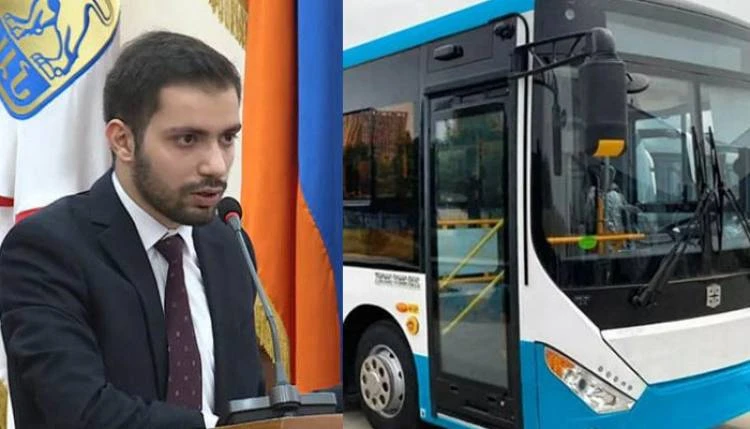The transport fare will not be 300 drams, it will be 150.5 drams on average.
"Since I see a lot of opinions, why are you making it so complicated, make it 150 drams for everyone, then it should be taken into account that in that case, for example, a citizen who commutes 4 times a day would pay 13,200 drams per month, and with our proposed option, he would pay 8,800 drams :
Now let's understand how the arithmetical average tariff is 150.5 drams and not 300.
Since many people claim that why you count Saturday and Sunday in the unified ticketing system, people are at home on that day, I want to present you with the following statistics:
On average, 245,000 passengers use the bus and subway on Saturday, and a little less on Sundays, assuming that if a person goes to point A-B, then we get an average of 122,500 people. Now, who are they? so these people and why should Saturday and Sunday not be counted, it could not be counted if that number was, for example, 20,000 people.
Now. on average, 440,000 passengers (metro+bus) are recorded on weekdays, and 122,500 people are included in the number of 220,000 people on the same 440,000 trips.
In other words, it turns out that on Saturdays and Sundays, in general, people use public transport 2 times less than on weekdays.
What happens in this case?
Working days per month: 22 days.
Non-working days per month: 8 days.
Number of weekday trips: 2 trips per day.
Trips on non-working days: 2 times less, that is, 2 divided by 2 = 1 trip on a non-working day.
Total number of trips during the month.
For working days:
22 x 2 = 44 trips.
Not for working days.
8 x 1 = 8 trips.
Total during the month.
44 + 8 = 52 trips.
It turns out that taking into account the lower intensity of weekends, the average cost of one trip when buying the monthly package is 8,800 divided by 52 = 169 AMD.
Case 1: According to the mentioned logic, it turns out that on working days, more than half of 220,000 people, 122,500 people use the transport 52 times during the month, therefore it turns out that on average, the fare for 55.7% of public transport users will be no more than AMD 169.
For pensioners: 118 drams
In the case of a student: 144 drams
In the case of a school student: 135 drams.
And if a person uses it 3 or 4 times a day, then according to the same formula it will be:
Case 2: 113 drams for 3 times
Pensioner: 79 drams
Student: 96 drams
School fee: 90 drams
Case 3: 84 drams in case of 4 times
Pensioner: AMD 59
Student: 71 drams
School fee: 67 drams
It is also important to note that the number of representatives of privileged groups is about 600,000, and even if there are people who are members of two different privileged groups at the same time, this number will not be large enough to have a significant impact, therefore they will be quite a large number. Users with tariffs less than AMD 169.
Considering the large number of privileged users, it can be predicted that on average 50% of passengers will use the privileges and to understand the average price of the total users, we take
Case 2 118+143+135=396/3=132 drams
the other 50% use AMD 169
132+169=301/2=150 AMD
It turns out that the transport tariff will be 150.5 drams as an arithmetic average, for some it may be more than 150.5, for some less. It may be counterargued here that not everyone will use the monthly package and many will buy the 10-time package, but there is another counterargument that there will also be buyers of the three-month package, where the cost per trip is on average more affordable than the monthly package and balancing them out. as a result, it is possible that the average price will again be 150.5 drams, therefore, it will be possible to calculate with this formula after a few months, when we will have statistics on how many people have used which package and how much is the privileged group?
In this calculation, there are still no numbers of trolleybus users and free users. The calculation can be done on the basis of more in-depth data. In that case, under the conditions of the new system, there may be an increase in the number of passengers, but the changes in these indicators can only give a difference of a few drams. , and no more. I mention this specifically so that the opposition or the media do not put forward any non-essential arguments and try to cast doubt on the above-mentioned logic is based in order to make it as clear as possible for citizens how to break the 300 dram fake thesis.
Naturally, individual cases or cases of fewer users can be added to this calculation. In that case, we have the AMD 2,100 package with the possibility of 10 trips in 30 days. For pensioners, it costs AMD 147.
Public transport, yes, is becoming more expensive, because the entire vehicle has changed, and the financial system that will ensure the sustainable transport in the next 10 years and its renewal should be formed today.
Are there still problems, yes, there are many, the intensity of military route 44 and many similar examples, work is being done in their direction every day," Galjian noted.


